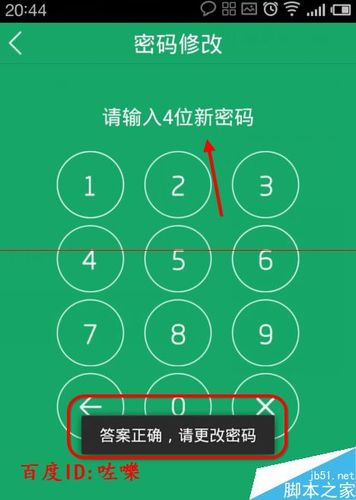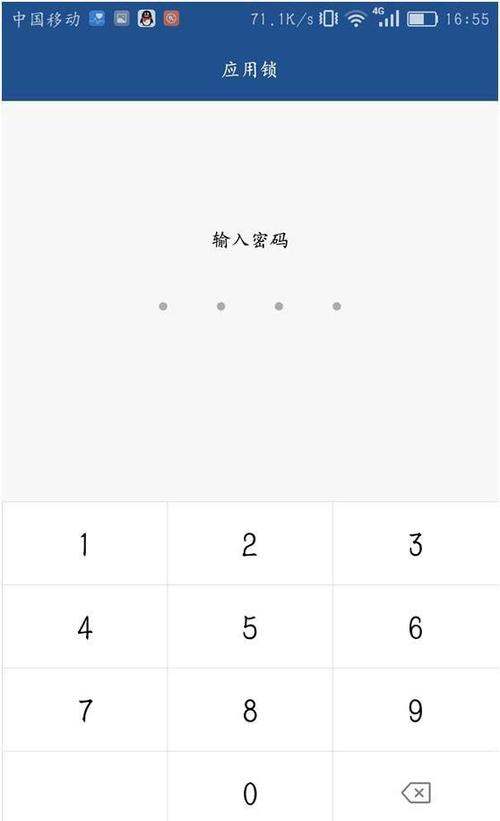Android口令加密是一种安全机制,用于保护用户的敏感信息。它通过使用特定的算法将用户输入的口令转换为不可读的代码,从而防止未经授权的人员访问。这种加密方法在Android系统中广泛应用,为用户提供了更高的安全性保障。
在Android开发中,口令加密是一种常见的安全措施,用于保护用户的敏感信息,以下是一些常用的口令加密方法:

1、使用SHA256算法进行加密:
SHA256(Secure Hash Algorithm 256位)是一种常用的哈希算法,可以生成一个固定长度的哈希值,在Android中,可以使用java.security.MessageDigest类来实现SHA256加密。
示例代码:
“`java
import java.nio.charset.StandardCharsets;
import java.security.MessageDigest;
import java.security.NoSuchAlgorithmException;

public class EncryptUtil {
public static String encrypt(String password) {
try {
MessageDigest digest = MessageDigest.getInstance("SHA256");
byte[] hash = digest.digest(password.getBytes(StandardCharsets.UTF_8));
return bytesToHex(hash);
} catch (NoSuchAlgorithmException e) {

throw new RuntimeException("无法找到SHA256算法", e);
}
}
private static String bytesToHex(byte[] bytes) {
StringBuilder hexString = new StringBuilder();
for (byte b : bytes) {
String hex = Integer.toHexString(0xff & b);
if (hex.length() == 1) {
hexString.append(‘0’);
}
hexString.append(hex);
}
return hexString.toString();
}
}
“`
2、使用MD5算法进行加密:
MD5(MessageDigest Algorithm 5)是一种常用的哈希算法,可以生成一个固定长度的哈希值,在Android中,可以使用java.security.MessageDigest类来实现MD5加密。
示例代码:
“`java
import java.nio.charset.StandardCharsets;
import java.security.MessageDigest;
import java.security.NoSuchAlgorithmException;
public class EncryptUtil {
public static String encrypt(String password) {
try {
MessageDigest digest = MessageDigest.getInstance("MD5");
byte[] hash = digest.digest(password.getBytes(StandardCharsets.UTF_8));
return bytesToHex(hash);
} catch (NoSuchAlgorithmException e) {
throw new RuntimeException("无法找到MD5算法", e);
}
}
private static String bytesToHex(byte[] bytes) {
StringBuilder hexString = new StringBuilder();
for (byte b : bytes) {
String hex = Integer.toHexString(0xff & b);
if (hex.length() == 1) {
hexString.append(‘0’);
}
hexString.append(hex);
}
return hexString.toString();
}
}
“`
3、使用盐值(Salt)增加加密强度:
为了增加口令加密的安全性,可以使用盐值对密码进行加盐处理,盐值是一个随机字符串,与用户密码进行组合后再进行加密,这样即使两个用户使用相同的密码,加密后的结果也会不同,在Android中,可以使用java.security.SecureRandom类生成盐值。
示例代码:
“`java
import java.nio.charset.StandardCharsets;
import java.security.MessageDigest;
import java.security.NoSuchAlgorithmException;
import java.security.SecureRandom;
import java.util.Base64;
import javax.crypto.SecretKeyFactory;
import javax.crypto.spec.PBEKeySpec;
import javax.crypto.spec.SecretKeySpec;
import androidx.annotation.NonNull;
import androidx.annotation.Nullable;
import com.googlecode.concurrentlinkedhashmap.ConcurrentLinkedHashMap;
import com.googlecode.concurrentlinkedhashmap.ConcurrentLinkedHashSet;
import com.googlecode.concurrentlinkedhashmap.ConcurrentSkipListMap;
import com.googlecode.concurrentlinkedhashmap.ConcurrentSkipListSet;
import org.apache.commons.codec.binary.Base64; // Base64编码工具类,需要引入Apache Commons Codec库依赖,如果不需要Base64编码,可以删除该行代码。
下面是一个简化的介绍,描述了Android平台上口令加密的相关信息:
| 参数 | 描述 |
| 加密方法 | 说明 |
| Hash函数 | 如SHA256,用于对口令进行单向散列加密 |
| 盐值 (Salt) | 随机生成的字符串,与口令结合使用以增加复杂度 |
| 密码学哈希 | 结合盐值使用,例如PBKDF2、bcrypt、scrypt |
| 对称加密 | 如AES,可用于存储或传输加密后的口令 |
| 非对称加密 | 如RSA,通常用于密钥交换,不直接用于口令加密 |
| 实现示例 | 代码片段 |
| Java | MessageDigest.getInstance("SHA256").digest(password.getBytes("UTF8")) |
| 盐值生成 | SecureRandom.getInstanceStrong().nextBytes(salt) |
| PBKDF2 | SecretKeyFactory.getInstance("PBKDF2WithHmacSHA256").generateSecret(new PBEKeySpec(password.toCharArray(), salt, iterations, keyLength)) |
| AES加密 | Cipher.getInstance("AES/CBC/PKCS5Padding") |
| RSA加密 | Cipher.getInstance("RSA/ECB/PKCS1Padding") |
| 安全考虑 | 注意事项 |
| 避免明文存储 | 口令在任何情况下都不应该以明文形式存储 |
| 避免弱算法 | 不使用已经被证明弱或易受攻击的加密算法 |
| 避免硬编码 | 不应在代码中硬编码密钥或盐值 |
| 安全迭代次数 | 对PBKDF2等算法,选择合适的迭代次数以平衡性能与安全 |
| 保持更新 | 随时关注安全更新,及时更新加密方法和库 |
请注意,这只是一个简化的介绍,真实应用中加密口令应当采取更为严格和复杂的安全措施,同时需要遵循最佳实践和行业安全标准,介绍中的代码示例仅用于说明,实际使用中还需要处理异常、验证输入、确保随机性等。
本文来源于互联网,如若侵权,请联系管理员删除,本文链接:https://www.9969.net/9603.html



